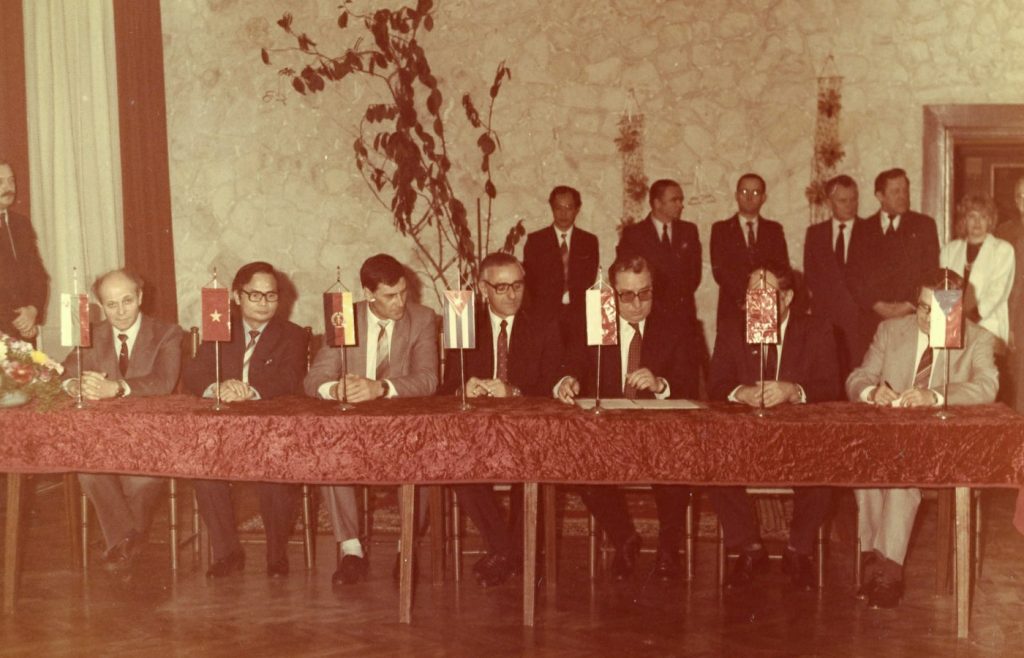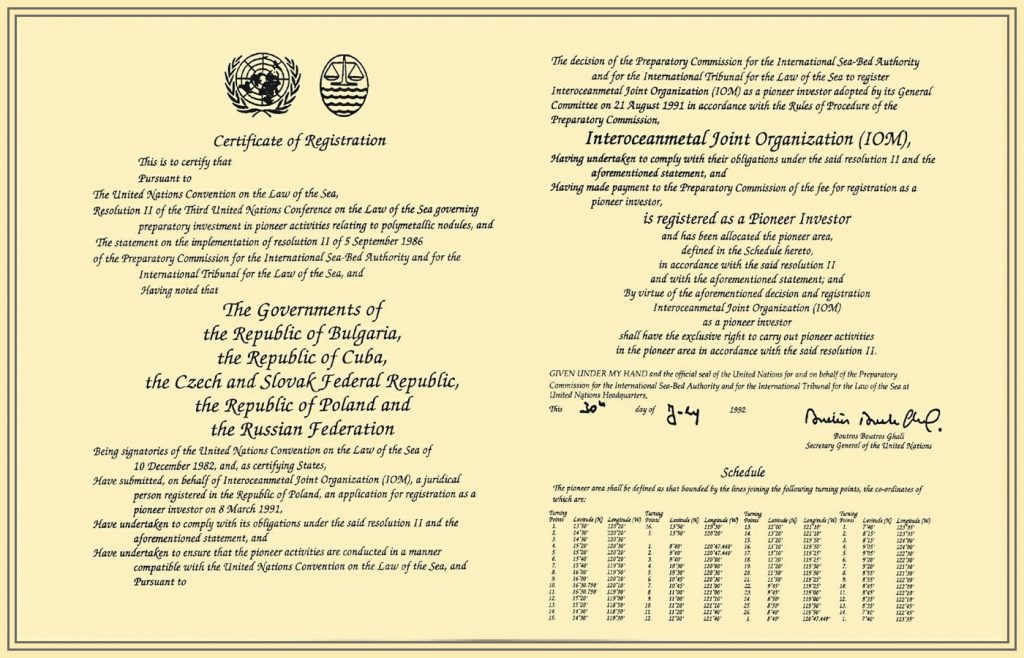The Interoceanmetal Joint Organization was established on 27 April 1987 on the basis of the Intergovernmental Agreement. The Agreement was signed by Bulgaria, Vietnam, the German Democratic Republic, Cuba, Poland, the USSR and Czechoslovakia, and the operation started in December 1987. In 1989, Vietnam withdrew from the Organization and Germany, in the wake of the unification, left in 1991. In January 1992, the Russian Federation took over the responsibilities of the former USSR. In December 1992, Slovakia and the Czech Republic became sovereign states and therefore, divided the responsibilities of the former Czechoslovakia between themselves. The following states are the present IOM’s members: Bulgaria, Cuba, the Czech Republic, Poland, the Russian Federation and Slovakia.
The aim of IOM for the initial years was to carry out regional geological and geophysical surveys in the CCZ in the Pacific Ocean. IOM carried out a preliminary study of the Prospecting area (546,000 km2). In that period also the perspective Application area of 300,000 km2, with the highest rate of nodule abundance, was selected.
In 1991, IOM submitted an application for the assignment and registration of the 150,000 km2 area as their exclusive plot to the Preparatory Commission for the International Seabed Authority (PREPCOM), which worked under the regulations of UNCLOS. The PREPCOM registered the area requested by IOM on 22 August 1991.
On 30 July 1992, the General Secretary of the United Nations awarded IOM the Certificate of Registration, whereby IOM became the Pioneer Investor. The registered pioneer area covered 150,000 km2. On 14 March 1995, IOM received the Certificate of fulfilling its commitments to the United Nations. The document constituted the basis for the development of the 15-year plan for deposit exploration in the area of 75,000 km2.
The contract for polymetallic nodules exploration in the area of 75,000 km2 was signed on 29 March 2001 by IOM and the ISA. Within that period, the most prospective exploration blocks were recognized and assigned. The results of the comprehensive research, which included geological documentation, technology of nodule extraction and processing as well as research on the marine environment in the Exploration area, were obtained.
In 2016, the contract was extended for the following 5 years. The current IOM’s activities aim at fulfilling the approved 5-years’ exploration plan. They include seabed geological survey, mining development and testing, technologies processing, environmental research, economy and other appropriate studies necessary to commence the nodule exploitation.
| 27 April 1987 | IOM is formed on the basis of the Intergovernmental Agreement. |
| 30 July 1992 | General Secretary of the United Nations awarded IOM the Certificate of Registration, whereby IOM became the Pioneer Investor. The Registered Pioneer Area covered 150,000 km2. |
| 14 March 1995 | IOM received the Certificate of Compliance with obligations as a Pioneer Investor, granted by the PREPCOM. |
| 29 March 2001 | IOM and the ISA signed the Contract for exploration of polymetallic nodules referring to the Exploration Area of 75,000 km2. |
| 25 May 2017 | IOM and the ISA signed the Agreement on the extension of the contract for exploration for polymetallic nodules for the period of 5 years. |
| 4 November 2022 | IOM and the ISA signed the Agreement on the extension of the contract for exploration for polymetallic nodules for the period of 5 years. |


